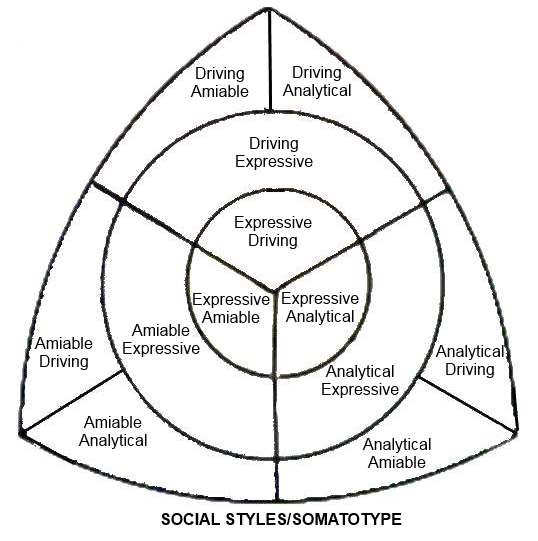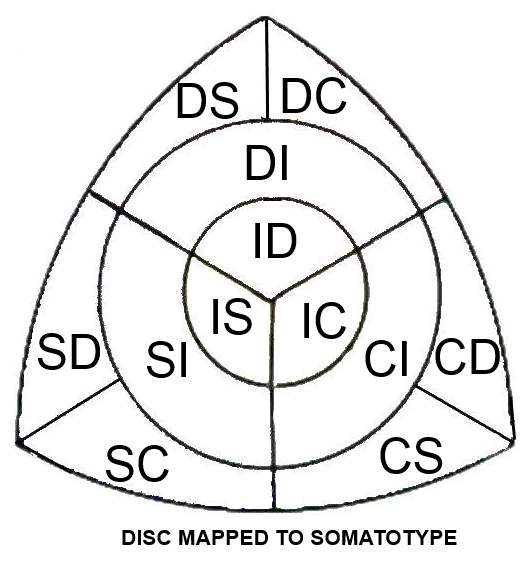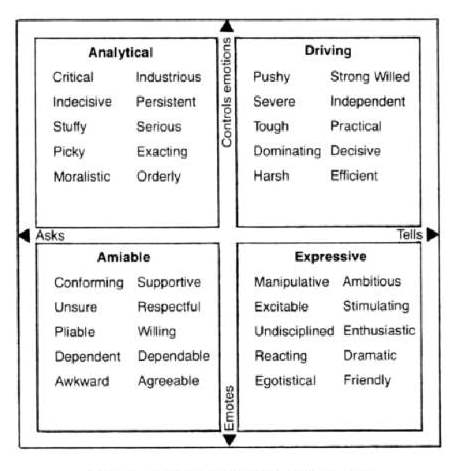The patterns of the classic temperaments proved to be very sticky. The classic temperaments were based on intuition and experience without the statistical tools which have shaped modern personality theories. Although not exactly science it is fair to assign them to the category of protoscience. They wouldn’t have stayed around so long if there weren’t some validity to the insights they provided. A variety of statistical tools were developed in the early 20th Century which led to a large crop of personality tests. Surprisingly a lot of these tests congealed around patterns of four quite similar to the classic temperament categories. When you look at some of these personality tests you can’t help but notice the similarities between them. Are these similarities because of the tools they are using or is there something deeper that is shaping them?
It seems that consulting firms are a breeding ground for these models. Four Quadrant Models are perfect for whiteboard lectures. You draw a Cartesian (x,y) coordinate system by intersecting two dimensions perpendicular to each other and suddenly – abracadabra. The two dimensions radiate from a zero point in a positive and negative direction. The problem is that what appears as magic is just a word game. The player chooses the dimensions and sets up the game board, which is a Cartesian coordinate system. The two intersecting dimensions can be any two dimensions. The next job is to fill the four quadrants with words that appear to fit themselves into the proper relation to each other either by definition or some kind of statistical method. This solves nothing because it is a descriptive exercise and not an explanation. The enchanted corporate managers are content that something substantive has occurred that will streamline the difficulties of hiring and motivating their most valuable resource – employees. Once a model is accepted by one giant corporation it seems it is automatically granted validity and reliability. The advertising for these instruments features the client corporations they’ve served and very little detail is provided on the actual results of published research methods.
Here are some 4-quadrant models.
Personal Styles & Effective Performance by David Merrill and Roger Reid (Tracom Group)

Disc Model Based on William M. Marston’s book Emotions of Normal People (1928) 1956-1966 Walter Clarke based his DISC assessment on Marston’s book. Several publishers/consultants have produced their own version of DISC personality tests.


The latest cheerleader for DISC is Tony Robbins! It’s good to see some connection finally made between motivation and personality. Check it out it’s a free test.
